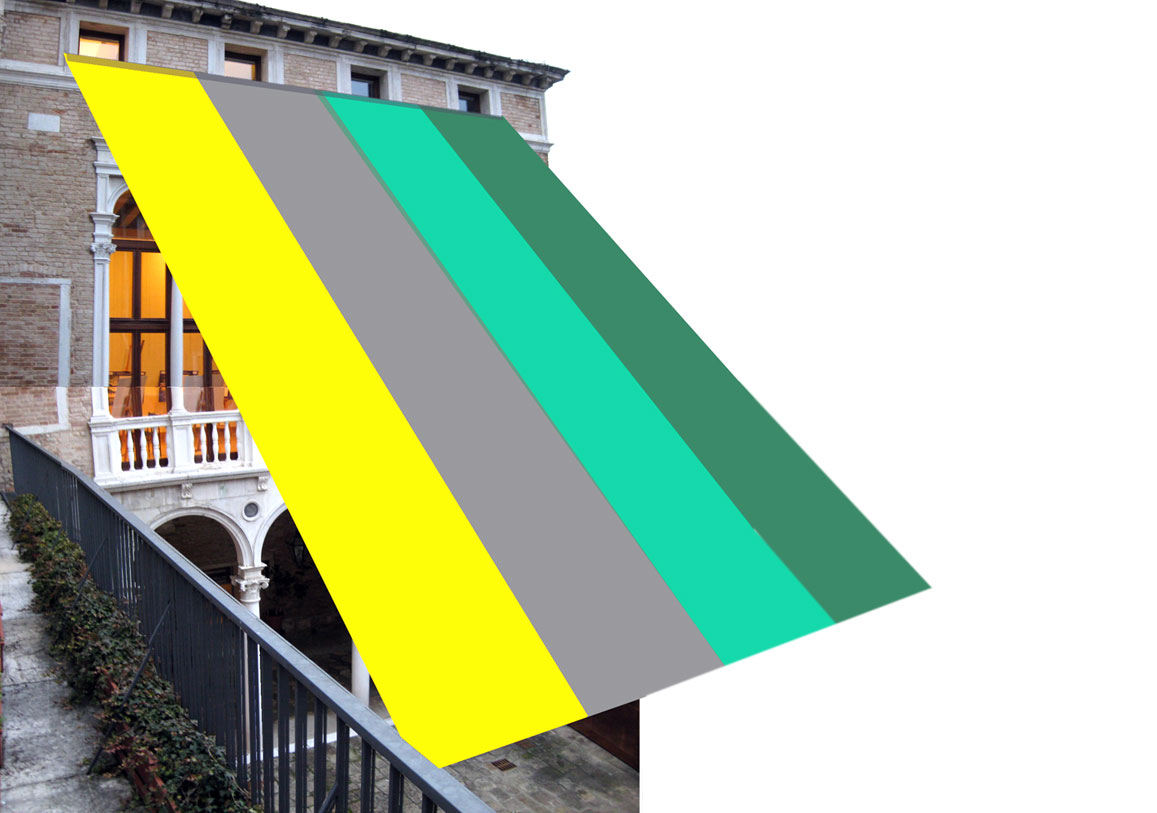

Roma Pavillion for Bienniale di Venecia
Unseco Office / Palazzo Zorzi
January 2011
(not realized)
General Assumptions of KDP Proposal
1.) Space Potentials
Palazzo Zorzi offers three four types of spaces – the portico, the courtyard, the staircase and the conference room upstairs. The portico is a covered outdoor space, the courtyard is open and exposed to the climate, the stairs offer an interconnecting space and the conference room is an air-conditioned interior space. Each of the spaces can host artworks, as well as talks, performances and gatherings. For the Roma Pavilion each of the four spaces will be used in their specific qualities.
2.) Social Performance
The best place to gather in a Venetian palace in summer is the courtyard. It is the largest space, the center of the building, with direct relations to the portico, the conference room and the street. Its size, shape, and atmosphere allow for more and different social situations than the interior spaces.
3.) Spatial Intervention
A large textile roof covers the courtyard and establishes a strong interconnection of all three spaces. It spans from above the windows of the conference room down to the railing of the courtyard. It is visible in every space, creates specific light conditions, and provides shading and a basic protection from rain.
4.) Programm
The well in the courtyard can be used as a table; it will be extended to host more people. The program during the opening days will be organized around this table. The light folding chairs are easy to move around – they can be arranged in a number of different setups, which create different relations between the space and the speakers and the audience. Later, the documentation of the opening days’ events will be shown at the table.